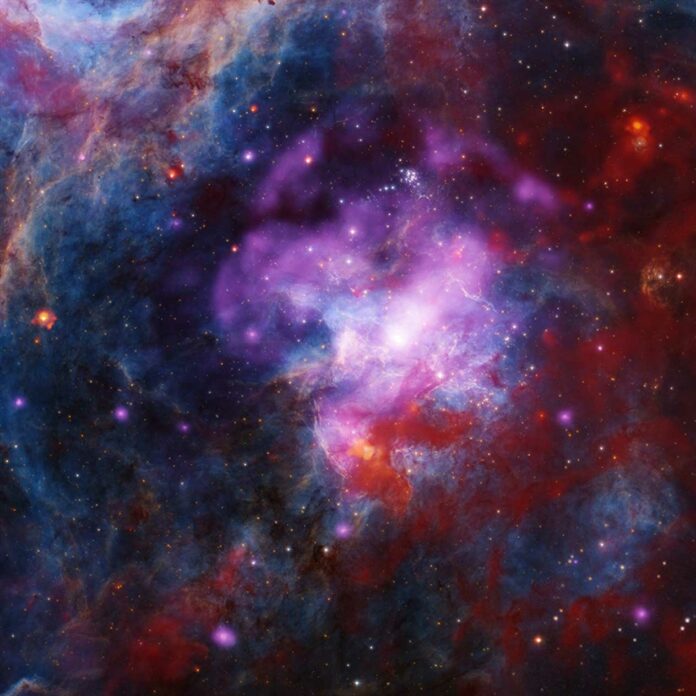An enchanting image captures the aftermath of not one, but at least two exploded stars in the colorful and festive display of 30 Doradus B (30 Dor B), a supernova remnant. This celestial spectacle is in a dynamic region where stars have been forming continuously for the past 8 to 10 million years. The complex landscape, located 160,000 light-years away in the Large Magellanic Cloud, features dark gas clouds, young stars, high-energy shocks, and superheated gas.
Crafted by combining data from NASA‘s Chandra X-ray Observatory (purple), the Blanco 4-meter telescope in Chile (orange and cyan), and NASA’s Spitzer Space Telescope (red), the image showcases the rich tapestry of this cosmic scene. Additional black-and-white highlights from NASA’s Hubble Space Telescope accentuate intricate details.
Led by Wei-An Chen from the National Taiwan University, a team of astronomers extensively analyzed 30 Dor B and its surroundings using over two million seconds of Chandra observing time. The findings reveal a faint X-ray shell spanning about 130 light-years. Notably, the Chandra data uncovers winds of particles emanating from a pulsar within 30 Dor B, forming what is known as a pulsar wind nebula.
Through a comprehensive analysis involving data from Hubble and other telescopes, researchers concluded that a single supernova explosion couldn’t account for the observed phenomena in 30 Dor B. The pulsar and the prominent X-rays at the center likely originated from a supernova triggered by the collapse of a massive star approximately 5,000 years ago. However, the expansive, faint X-ray shell appears too large to be a product of the same event. The team proposes that at least two supernova explosions occurred in 30 Dor B, with the additional X-ray shell originating from a different supernova over 5,000 years ago. It’s plausible that even more supernova events contributed to the complex history of this region.
This discovery offers valuable insights for astronomers to better understand the life cycles of massive stars and the consequences of their explosive supernova events.
Journal Reference:
- Wei-An Chen, Chuan-Jui Li et al. New Insights on 30 Dor B Revealed by High-quality Multiwavelength Observations. The Astronomical Journal. DOI 10.3847/1538-3881/acff72
